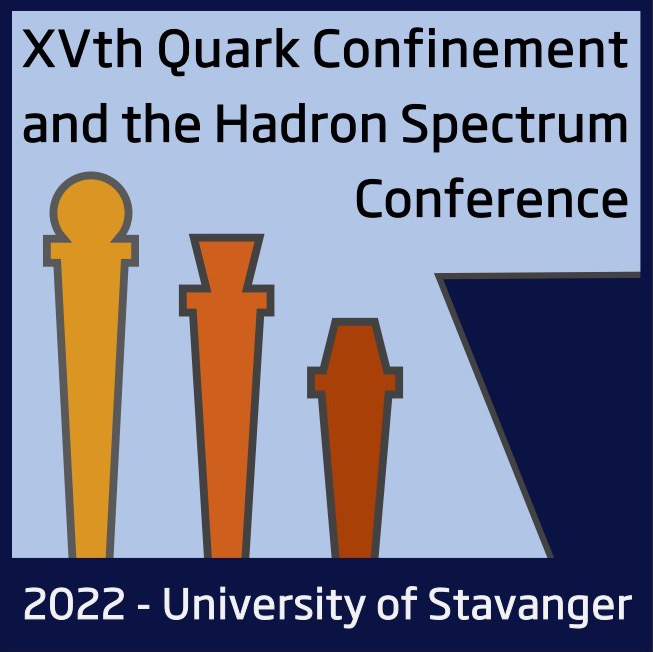Speakers
Description
Thermal production of sexaquarks are calculated in different Statistical Models.
Sexaquarks are a hypothetical low mass, small radius uuddss dibaryon which has been proposed recently and especially as a candidate for Dark Matter [1,2]. The low mass region below 2 GeV escapes upper limits set
from experiments which have searched for the unstable, higher mass H-dibaryon and did not find it [1].Depending on its mass, such state may be absolutely stable or almost stable with decay rate of the order of the lifetime
of the Universe therefore making it a possible Dark Matter candidate [2].Even though not everyone agrees [3] its possible cosmological implications as DM candidate cannot be excluded and it has been recently searched in the BaBar experiment [4].
The assumption of a light Sexaquark has been shown to be consistent with observations of neutron stars [5] and the Bose Einstein Condensate of light Sexaquarks has been discussed as a mechanism that could induce quark deconfindement in the core of neutron stars [6].
S production in heavy ion collisions is expected to be much more favorable than in the only experimental search to date, $\Upsilon \rightarrow 𝑆\bar{\Lambda} \bar{\Lambda}$ [4], which is severely suppressed by requiring a low multiplicity exclusive final state [1]. By contrast, parton coalescence and/or thermal production give much larger rates in heavy ion collisions [1,8].
We use a model which has very successfully described hadron and nuclei production in nucleus-nucleus collisions at the LHC [7], in order to estimate the thermal production rate of Sexaquarks with characteristics such as discussed previously rendering them DM candidates.
We show new results on the variation of the Sexaquark production rates with mass, radius and temperature and chemical potentials assumed and their ratio to hadrons and nuclei and discuss the consequences.
These estimates are important for future experimental searches and enrich theoretical estimates in the multiquark sector.
The microscopic production rates of exotic states like $X(3872)$ [9] and Pc(4312), Pc(4440), Pc(4457) [10] are calculated
in pp collisions at $\sqrt(s)$ 7 and 13 TeV within MC PACIAE+DCPC model for three different scenarios:
i.e.pentaquark state, nucleus-like state and molecular state.
[1] G. R. Farrar, (2017), arXiv:1708.08951 [hep-ph] and G. R. Farrar, (2022), arXiv:2201.01334 [hep-ph] [2] G. R. Farrar, (2018), arXiv:1805.03723 [hep-ph] and G.R.Farrar,X.Xu and Z. Wang, (2020),arXiv:2007.10378 [hep-ph].
[3] E. Kolb, M. Turner,Phys.Rev. D99 (2019) no.6, 063519
[4] BABAR Coll. J. P. Lees et al, Phys.Rev.Lett. 122 (2019) no.7, 072002
[5] D. Blaschke et al., Phys. rev. D 105, 103005 (2022)
[6] D. Blaschke et al., e-Print: 2202.05061 [nucl-th]
[7] K. A. Bugaev et al, Nucl.Phys. A970 (2018) 133-155 and references therein.
[8] D. Blaschke et al, Int. J. Mod. Phys. A 36 (2021) 25, 2141005, arXiv:2111.03770
[9] H.G.Xu et al EPJC 81 (2021) 784
[10] C.H. Chen et al arXiv:2111.03241, Accepted by PRD

